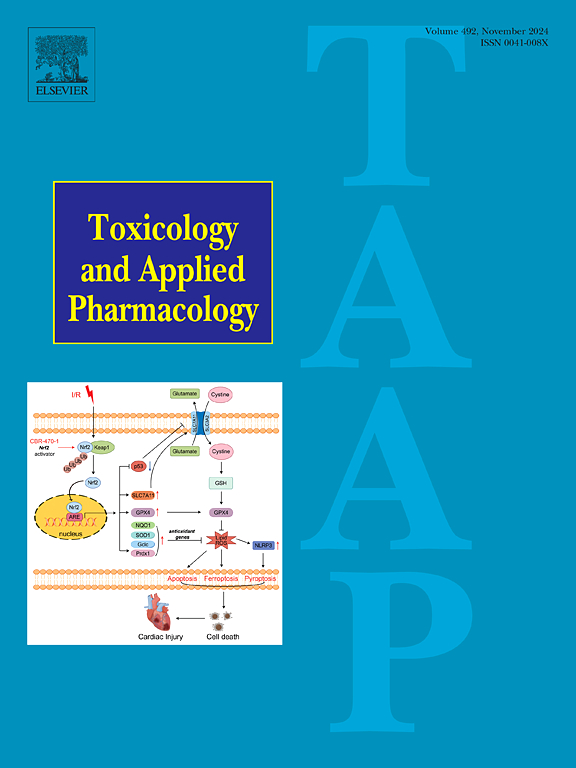CB-5083 and luteolin synergistically induce the apoptosis of bladder cancer cells via multiple mechanisms
IF 3.3
3区 医学
Q2 PHARMACOLOGY & PHARMACY
引用次数: 0
Abstract
Purpose
Bladder cancer (BC) is a common urological malignancy for which effective treatments are lacking. In recent years, valosin-containing protein (VCP) has emerged as a potential target for the treatment of cancers. CB-5083 is a VCP inhibitor that has been evaluated in phase I clinical trials. However, drug resistance and severe side effects hamper the application of CB-5083. Mounting evidence suggests that combined treatment is a useful strategy to improve anticancer efficiency with lower toxicity. The aim of this study was to evaluate the combined effects of CB-5083 and luteolin (Lut), a natural flavonoid, on BC cells.
Methods
Cellular viability was measured via MTT assays. The cell cycle distribution, degree of cell death and mitochondrial membrane potential were assayed via flow cytometry. mRNA levels were assayed via qRT–PCR. Protein levels were measured via western blotting. RNA interference was applied to knockdown genes. Xenograft experiments were conducted to evaluate the toxicity in vivo.
Results
Cotreatment with CB-5083 and luteolin synergistically reduced the viability of BC cells. In addition, cotreatment with CB-5083 and Lut synergistically induced cell cycle arrest at the G1 phase and apoptosis in BC cells. Mechanistically, CB-5083/Lut cooperatively reduced the expression of Bcl-xl and Mcl-1 in BC cells. Moreover, CB-5083 and Lut synergistically induced endoplasmic reticulum (ER) stress in BC cells. The genetic or pharmacological inhibition of ER stress markedly reduced the degree of apoptosis induced by CB-5083, Lut or their combination in BC cells. In addition, combined treatment with CB-5083 and Lut synergistically repressed the growth of BC cells in vivo.
Conclusion
Our data suggest that combined treatment with CB-5083 and Lut might be applied to treat BC.

CB-5083与木犀草素通过多种机制协同诱导膀胱癌细胞凋亡。
目的:膀胱癌是一种常见的泌尿系统恶性肿瘤,目前缺乏有效的治疗方法。近年来,含缬草苷蛋白(VCP)已成为治疗癌症的潜在靶点。CB-5083是一种VCP抑制剂,已在I期临床试验中进行评估。然而,CB-5083的耐药性和严重的副作用阻碍了它的应用。越来越多的证据表明,联合治疗是一种有效的策略,可以提高抗癌效率,降低毒性。本研究的目的是评价CB-5083和天然类黄酮木犀草素(Lut)对BC细胞的联合作用。方法:采用MTT法测定细胞活力。流式细胞术检测细胞周期分布、细胞死亡程度及线粒体膜电位。通过qRT-PCR检测mRNA水平。western blotting检测蛋白水平。RNA干扰被用于敲低基因。采用异种移植实验对其进行体内毒性评价。结果:CB-5083与木犀草素共处理可协同降低BC细胞活力。此外,CB-5083和Lut共处理可协同诱导细胞周期阻滞在G1期和BC细胞凋亡。机制上,CB-5083/Lut协同降低BC细胞中Bcl-xl和Mcl-1的表达。此外,CB-5083和Lut协同诱导BC细胞内质网(ER)应激。内质网应激的遗传或药理学抑制可显著降低CB-5083、Lut或其联合诱导的BC细胞凋亡程度。此外,CB-5083和Lut联合治疗在体内可协同抑制BC细胞的生长。结论:我们的数据提示CB-5083联合Lut治疗BC是可行的。
本文章由计算机程序翻译,如有差异,请以英文原文为准。
求助全文
约1分钟内获得全文
求助全文
来源期刊
CiteScore
6.80
自引率
2.60%
发文量
309
审稿时长
32 days
期刊介绍:
Toxicology and Applied Pharmacology publishes original scientific research of relevance to animals or humans pertaining to the action of chemicals, drugs, or chemically-defined natural products.
Regular articles address mechanistic approaches to physiological, pharmacologic, biochemical, cellular, or molecular understanding of toxicologic/pathologic lesions and to methods used to describe these responses. Safety Science articles address outstanding state-of-the-art preclinical and human translational characterization of drug and chemical safety employing cutting-edge science. Highly significant Regulatory Safety Science articles will also be considered in this category. Papers concerned with alternatives to the use of experimental animals are encouraged.
Short articles report on high impact studies of broad interest to readers of TAAP that would benefit from rapid publication. These articles should contain no more than a combined total of four figures and tables. Authors should include in their cover letter the justification for consideration of their manuscript as a short article.

 求助内容:
求助内容: 应助结果提醒方式:
应助结果提醒方式:


